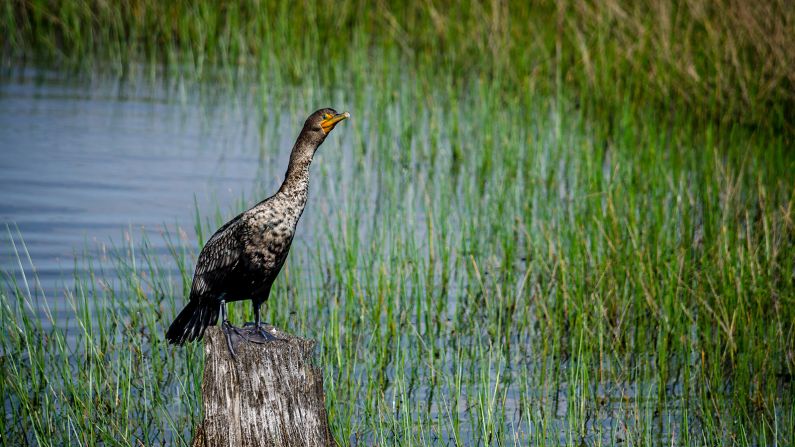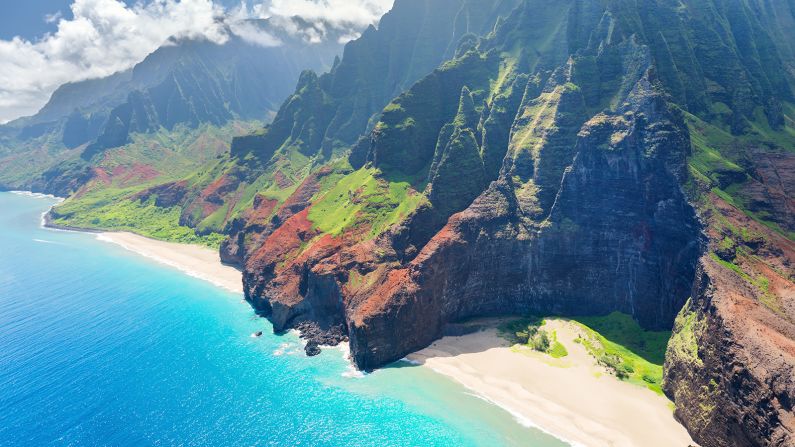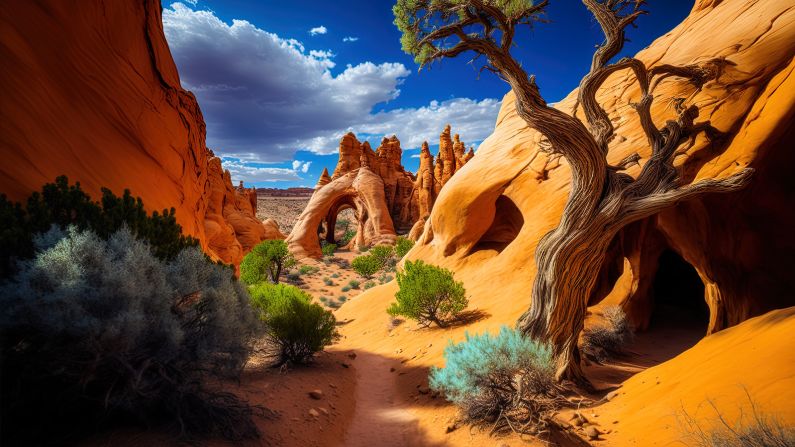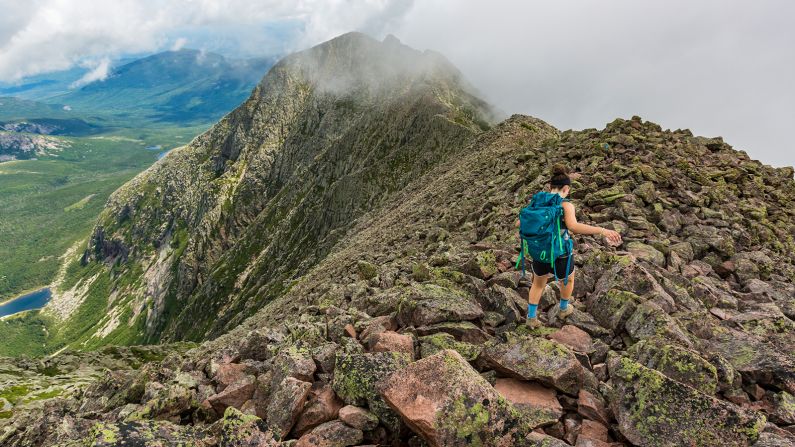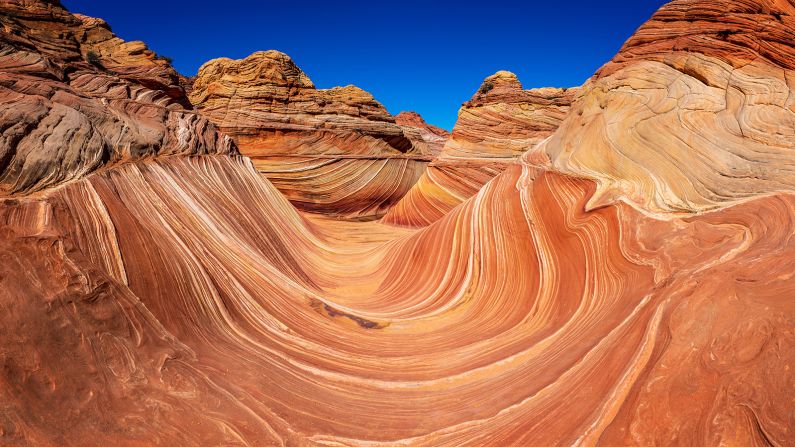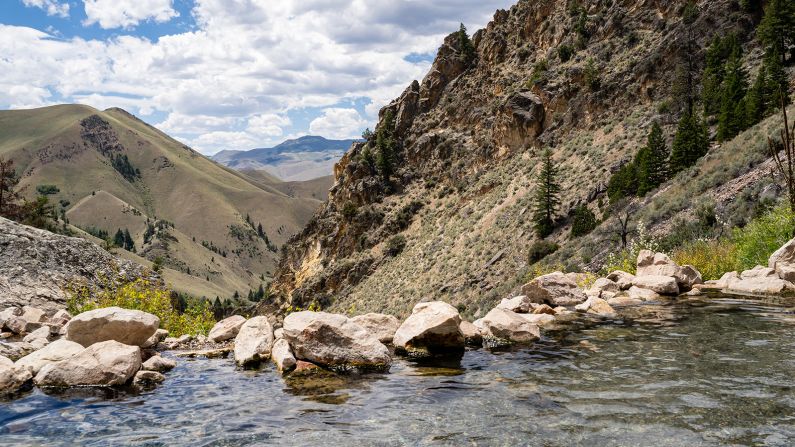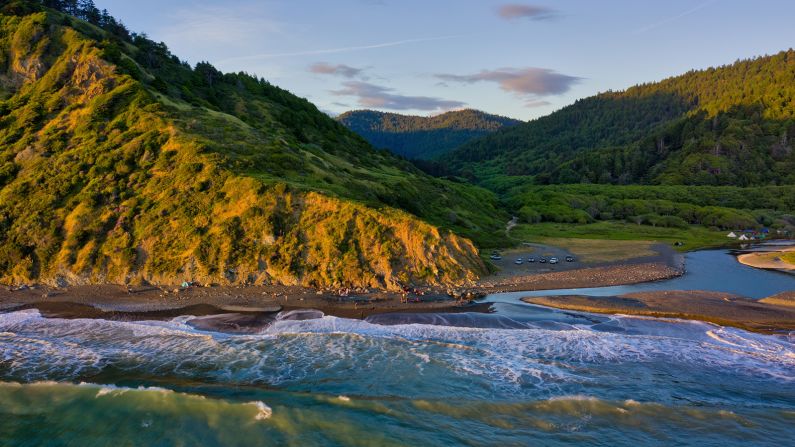“National parks are the best idea we ever had,” declared American writer and environmentalist Wallace Stegner. And like many great inventions, the park system became wildly popular.
More than 300 million people are expected to visit US national parks in 2022, a 75% increase since the 1970s. And while introducing so many to the wonders of nature is one of the primary reasons why the National Park Service was founded in 1916, it also comes with a downside.
Popular parks such as Yosemite and Zion had to impose reservation systems for just entering during the busy summer months. Yellowstone’s highways have been plagued by traffic jams as motorists slow down to view bison and other wildlife. Snagging a high season campsite at many parks is harder than winning a jackpot in Las Vegas.
But there are options for those who want to explore America’s great outdoors without the crowds. The country boasts four alternative park systems that reach across the nation and in many cases are vastly underutilized:
Bureau of Land Management National Monuments & National Conservation Areas: The BLM oversees 51 desert, prairie, forest and coastal parks in 12 states.
National Wildlife Refuges: The US Fish & Wildlife Service manages more than 560 land and water parcels that protect many iconic American species and provide incredible wildlife viewing.
National Forests: Since President Benjamin Harrison created the first federal forest reserve in 1891, the system has grown to include 439 wilderness areas, 122 wild and scenic rivers, nine monuments and more.
State Parks: More than 10,000 state parks protect and preserve a wide variety of American marvels from redwood trees and wild ponies to the Big Sur coast, Lake Tahoe and Niagara Falls.
While some alternative parks are beset by the same overcrowding and resource strains that plague the more popular national parks, many others offer a chance to get away from it all on your own rather than elbow-to-elbow with other nature seekers.
Here are some of the best:
Grand Staircase-Escalante National Monument (Utah)
Fewer than a million people a year visit Utah’s big BLM park, and most of those don’t stray far from State Highway 12 along the monument’s northern edge or US Highway 89 in the south.
The park takes its name from the Grand Staircase plateaus that descend like giant stone steps across southern Utah and the sinuous Escalante Canyons carved by streams flowing into the Colorado River watershed.
Best known for hiking, mountain biking and canyoneering, the park also boasts hundreds of Native American archaeological sites, copious dinosaur digs and an astounding 660 species of wild bee.
Just passing through: Book an RV hookup, cabin or Airstream trailer at hipster hangout Yonder Escalante and embark on day trips to Devil’s Garden, Calf Creek Trail or Peek-a-Boo Slot Canyon that are easily reached by road.
Deep dive: Join a six-day guided mountain biking journey across GSENM with Moab-based Western Spirit Cycling Adventures.
Best time: Autumn, when the weather is cooler and the canyon trees are flashing their fall colors.
More info: Grand Staircase-Escalante National Monument
California’s Lost Coast

One of the nation’s longest underdeveloped shorelines, the Lost Coast stretches 25 miles (40 kilometers) from Mattole Beach to Shelter Cove (230 miles or 370 kilometers north of San Francisco).
A vision of what Big Sur would be like if Highway 1 had never existed, the coast and its pristine backcountry are protected within the confines of Sinkyone Wilderness State Park and the BLM’s King Range National Conservation Area.
From elephant seals and other marine mammals to bald eagles, black bears and some of California’s last wild salmon streams, the area is home to a wide range of wildlife as well as coastal redwoods and immense Douglas firs.
Just passing through: Crash at the upscale Castle Inn or mid-range Inn of the Lost Coast in Shelter Cove and hit the sand for surfing, fishing or beachcombing.
Deep dive: Hike the Lost Coast Trail, a rugged three-day backpack camping trip along the beach and cliffs.
Best time: Summer brings the best temperatures and least rain.
More info: King Range Alliance
St. Marks National Wildlife Refuge (Florida)
Spanning 43 miles (70 kilometers) of Florida’s Gulf Coast, the park revolves around bays and bayous flanked by coastal grasslands and forest.
Established in 1931 and one of the nation’s oldest federal wildlife refuges, St. Marks harbors a range of wild things from alligators, manatees and dolphins to bobcats, black bears, white-tailed deer and hundreds of bird species including the bald eagle and whooping crane.
The reserve is renowned for its colorful monarch butterfly migration and historic St. Marks Lighthouse, built in 1831.
Just passing through: Venture to the reserve by car from a room at the Sweet Magnolia Inn, a bed and breakfast in a vintage building that previously served as a general store, brothel, church and St. Marks City Hall.
Deep dive: With seven campsites for through hikers, St. Marks makes it easy to backpack 45 miles of the Florida National Scenic Trail that meander across the reserve.
Best time: During the Monarch Butterfly Festival at the refuge in October.
More info: St. Marks National Wildlife Refuge
Baxter State Park & Allagash Wilderness Waterway (Maine)
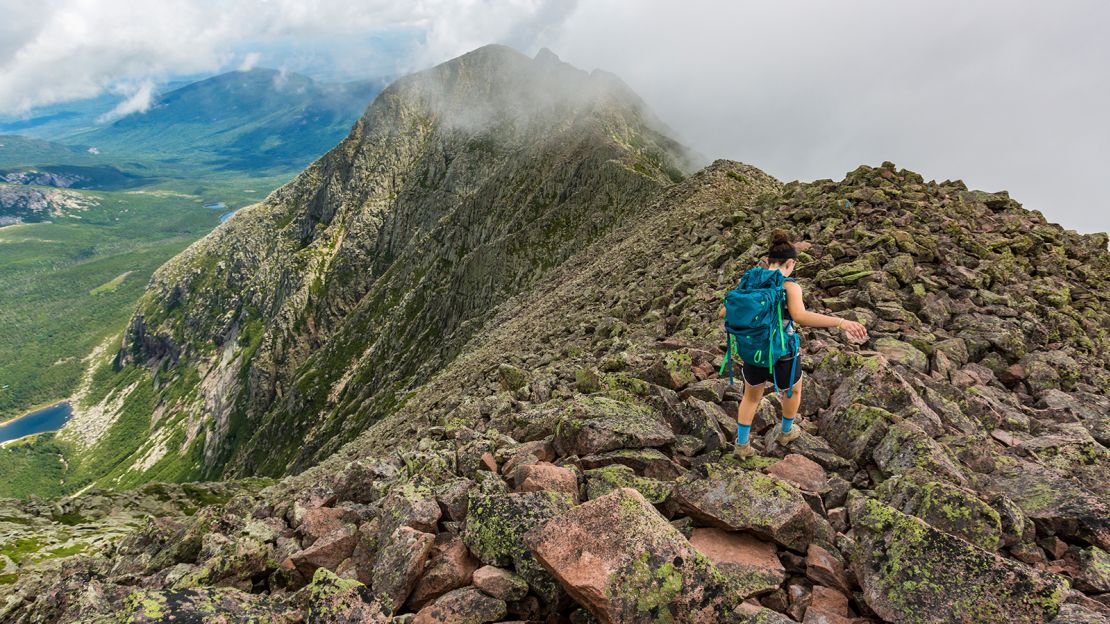
Maine’s sparsely inhabited North Woods offers a wild and rugged escape for more than 25 million people living in New England and eastern Canada. The region covers roughly 3.5 million acres – more water and woods than Yellowstone and Yosemite combined.
Baxter State Park and the Allagash Wilderness Waterway are the region’s premier parks. With only about 65,000 visitors each year – mostly in the summer months – the two state reserves deliver on getting away from it all.
Baxter boasts Maine’s highest peak, 5,269-foot (1,606 meters) Mount Katahdin, and the northern terminus of the Appalachian Trail, while Allagash provides a 92-mile (148-kilometer) corridor of wild rivers and lakes that Henry David Thoreau extolled in an 1864 travel story about his own paddle through the North Woods.
Just passing through: Reserve a room at the rustic Big Moose Cabins or other digs in Millinocket and drive into Baxter State Park for day hikes.
Deep dive: Join a weeklong guided paddle along the Allagash Wilderness Waterway with Maine Trails Guide Service.
Best time: June to early October
More info: Baxter State Park and Allagash Wilderness Waterway
Wood-Tikchik State Park (Alaska)
With towering snowcapped peaks and a dozen large glacial lakes, pristine forest and tundra, plus grizzly bears, moose, caribou and other iconic Alaskan wildlife, Wood-Tikchik would probably be a national park if it was in any other state.
Covering 1.6 million acres, this western Alaska reserve is the nation’s largest and most remote state park. With extremely limited road access, the only ways to explore this larger-than-life landscape are via water, air or a very long overland hike.
With only two ranger stations and five remote fishing lodges scattered across the park, anyone who ventures on their own into Wood-Tikchik should be self-sufficient and experienced at wilderness survival.
Just passing through: Boating, fishing or camping at Lake Aleknagik State Recreation Site, 32 miles (52 kilometers) from Dillingham and the park’s only road access.
Deep dive: Paddling or motorboating the Wood River Lakes Water Trail through five-interconnected lakes on the park’s south side.
Best time: Summer and early fall.
More info: Wood-Tikchik State Park & Lake Aleknagik State Recreation Site
Vermilion Cliffs National Monument (Arizona)

Named for their purplish hue – caused by iron oxide and magnesium in the red sandstone – these chromatic cliffs are the focus of a large BLM park in northern Arizona.
The swirling “Wave” rock formation is so popular that visitation is limited, and there’s a lottery system for access. But the rest of the national monument is largely devoid of online influencers and selfie snappers.
Tucked amongst the cliffs are dramatic gorges such as Paria Canyon as well as other fantastic rock formations including Toadstool Hoodoos, White Pocket and the Alcove.
Just passing through: Combine Navajo culture and day hikes at Vermillion Cliffs by staying at the Shash Dine Eco Retreat near Page, Arizona.
Deep dive: A three- to five-day backpack trek down the entire length of Paria Canyon from trailheads in southern Utah.
Best time: Anytime but summer, when daytime highs often reach triple digits.
More info: Vermilion Cliffs National Monument
Mount St. Helens National Volcanic Monument (Washington)
Mount St. Helens was just another run-of-the-mill spectacular snowcapped peak until May 18, 1980, when the volcano blew its top in a cataclysmic eruption that released 24 megatons of thermal energy.
The eruption created a massive crater, extensive debris fields and a ghostly blanket of dead trees on Spirit Lake that highlight this Forest Service national monument. Hiking, mountain biking, cross-country skiing, snowshoeing and exploring the Ape Cave lava tube are the park’s main activities.
Just passing through: Drive Highway 504 to the Johnston Ridge Observatory and a short Eruption Trail through the lava landscape or Highway 99 to Windy Ridge with its views of the crater and Spirit Lake.
Deep dive: Circumnavigate the volcano over two or three days on the 30-mile (48-kilometer) Loowit Trail.
Best time: Summer and early fall.
More info: Mount St. Helens Volcanic Monument and Gifford Pinchot National Forest
Camp Hale-Continental Divide National Monument (Colorado)
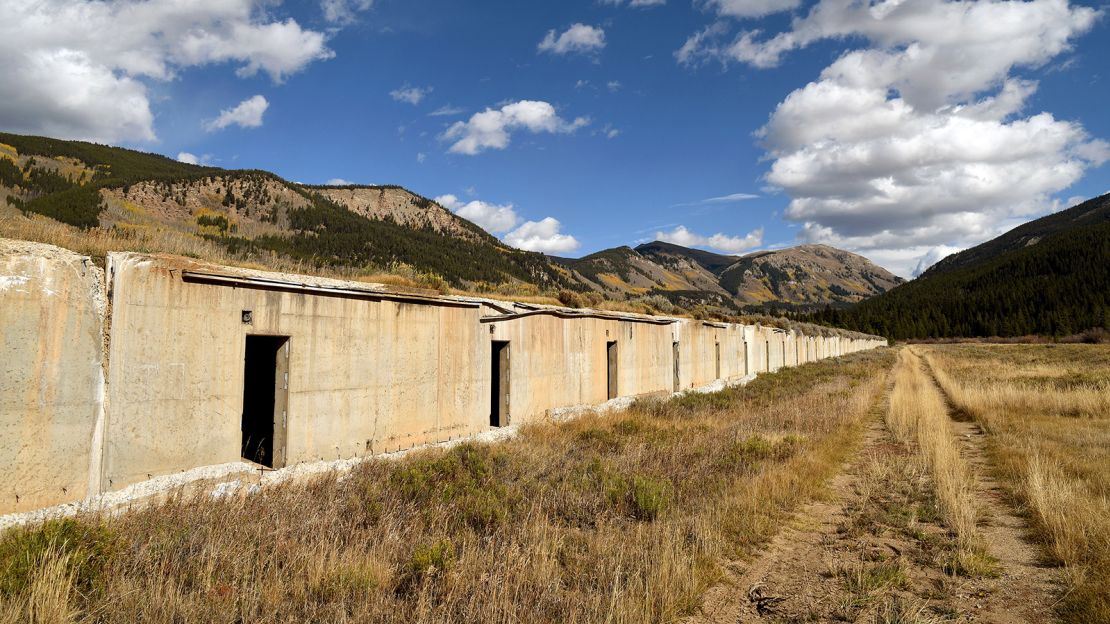
The nation’s newest national monument – created by presidential decree on October 12, 2022 – features an awesome expanse of Colorado’s high country that combines outdoor recreation, military history and magnificent Rocky Mountain scenery.
Administered by the Forest Service, the park includes 20 miles (32 kilometers) of the Continental Divide Trail and the remains of Camp Hale, where the US Army’s 10th Mountain Division trained during World War II. Some of those soldiers would fuel American snow sports and create more than 60 ski resorts after the war.
The new park provides plenty of scope for backcountry skiing and snowmobiling in winter, as well as backpacking, climbing and fishing during summer.
Just passing through: The town of Leadville provides a perfect base for exploring the park’s military history and shorter hiking trails.
Deep dive: Undertake a multiday ski tour or summer trek with overnights at the park’s 10th Mountain Division Huts.
Best time: Year-round.
More info: Camp Hale-Continental Divide National Monument
Nā Pali Coast (Hawaii)
There’s a reason why the opening scene of the original “Jurassic Park” was filmed on the Nā Pali Coast – the north shore of Kauai Island really does look (and feel) primeval.
Crowned by thick tropical vegetation, Nā Pali’s rust-colored cliffs rise behind remote Pacific beaches. Just beyond the coast is Waimea Canyon, a 3,000-foot-deep (914 meters) gorge often called the “Grand Canyon of the Pacific.” Foot and boat are the primary ways to explore the largely roadless region.
Sheltered by 10 contiguous state parks, natural areas and forest reserves, Nā Pali and Waimea Canyon are a haven for many rare plants and birds – but unfortunately no dinosaurs.
Just passing through: Hop aboard a Capt. Andy’s catamaran for a sail along the coast or eyeball Waimea Canyon from vertiginous viewpoints in Kōkeʻe State Park.
Deep dive: Backpack the entire Kalalau Trail (five days).
Best time: Summer, when there’s less rain and calmer seas.
More info: Island of Kauaʻi State Parks
Salmon-Challis National Forest (Idaho)
Another area that surely deserves national park status, Idaho’s Salmon River and Sawtooth Mountains are among the most spectacular ranges of the Rocky Mountains. Until that happens, the remote region and its epic wild rivers are sheltered by several national forests including Salmon-Challis.
While some areas are easy to access by road, other parts of the vast reserve require a backpack and good hiking boots. The largest federal wilderness area outside of Alaska, the Frank Church-River of No Return Wilderness spreads across 2.3 million acres of secluded woods, water and snowcapped peaks.
Just passing through: Drive the 25-mile (40-kilometer) Custer Motorway Adventure Road to historic sites in the 19th-century Yankee Fork Mining District.
Deep dive: Join Holiday River Expeditions for a six-day whitewater raft trip down the River of No Return (aka Middle Fork of the Salmon River).
Best time: Summer.
More info: Salmon-Challis National Forest

